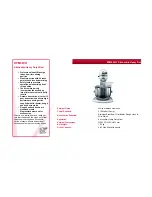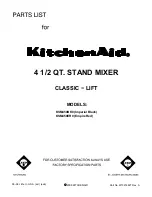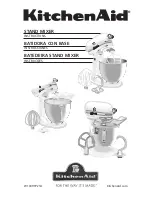
10
STEREO INPUT
SECTION
MONO MIC/LINE
INPUT SECTION
ROUTING
PUSH BUTTON
CHANNEL MAIN
CONTROL SECTION
3.
ROUTING SYSTEM
All the models in the AD range of ETEK mixers have a Patents Pending feature called the ROUTING
SYSTEM. This system is the best way to have Mono and Stereo channels simultaneously, thus
multiplying the input possibilities, within the smallest dimensions.
A mixer is usually quite a rigid system, with the possibility of using only a certain number of Mono and
Stereo channels.
Now thanks to the revolutionary new Routing System®, the new ETEK mixers are much more flexible.
In these mixers the user can decide to use any channel in either Mono or Stereo mode or even both
simultaneously.
The user has six channels, each with one Mono and one Stereo input, that can be used both in Mono and
Stereo simultaneously, making possible the use of a total of 18 inputs. Suppose that 6 STEREO keyboard
signals and 6 MONO Mic/Line inputs need to be sent through the mixer; two different ‘Routing’
possibilties are available as follows:
a.
ROUTING BUTTON (PB 2) PRESSED - MONO INPUTS THROUGH MAIN CHANNEL SECTION
Press the ‘ROUTING’ push button (PB 2) to send the MONO MIC/LINE INPUT
SECTION through the CHANNEL MAIN CONTROL SECTION of the relative
group of inputs and route the STEREO INPUT SECTION to the next channel’s
Main Control Section.
This syst em wor ks in a chain-like fashion; for example –
Pressing the ‘Routing’ push button of CH. 1 / CH 7/8
enables the MONO Mic/Line input section (CH.1) to be
controlled by the CHANNEL MAIN CONTROL SECTION of
these inputs while routing the STEREO keyboard inputs
section (CH. 7/8) to the second control section. Pressing
the ‘Routing’ button of CH. 2 / CH. 9/10 puts the MONO
Mic/Line input (CH. 2) under the influence of the main
control section of these inputs and routes the STEREO
keyboard inputs CH. 9/10 together with the previously
routed CH. 7/8 to the third section, and so on. It will be seen
that, using this principle, each set of inputs and those routed
from the previous channels can be routed either to the
Channel Main Control Section or re-routed further.
Finally if all 6 ‘Routings’ are pressed, the 6 Stereo Keyboard
inputs to CH. 7/8, CH. 9/10, CH. 11/12, CH. 13/14, CH.
15/16 and CH. 17/18 will flow into the general L/R output. In
this case, each of the four Main Control Sections of the
inputs operate on the respective Mono Mic/Line signals.
b .
ROUTING BUTTON (PB 2) NOT PRESSED – STEREO
INPUTS THROUGH MAIN CHANNEL SECTION
Position the ‘ROUTING’ push button of CH. 1 / CH 7/8 in the
‘UP’ position to feed the STEREO INPUT SECTION (CH.
7/8) to the CHANNEL MAIN CONTROL SECTION of these
inputs, while routing the MONO MIC/LINE INPUT SECTION
(CH.1) to the second Channel Main Control Section and so
on as above. It is the ‘ROUTING’ button that decides which of the inputs is ‘routed’ to their own
Channel Main Control Section and which of these is ‘diverted’ to another section.
If the ‘Routing’ keys are not pressed, it is the MONO signals, in this case, that are routed to the
following channel and the STEREO signals, that are routed through the Main Control Sections.
The only difference being that, if all four ‘Routing’ push buttons are placed in the ‘UP’ position, the 6
MONO Mic/Line signals will not flow into the general L/R output, as the signals would be unsuitable,
but will be effectively turned ‘OFF’.
All this obviously allows for greater flexibility and, although guaranteeing the same performance quality
as other systems, enables enormous space saving.












































